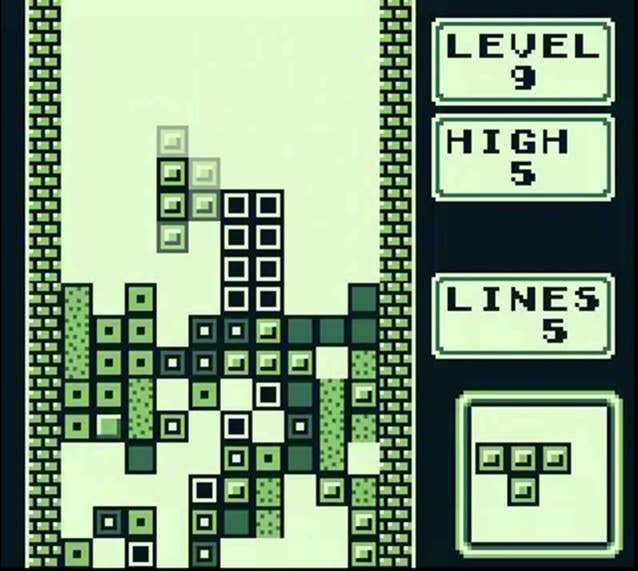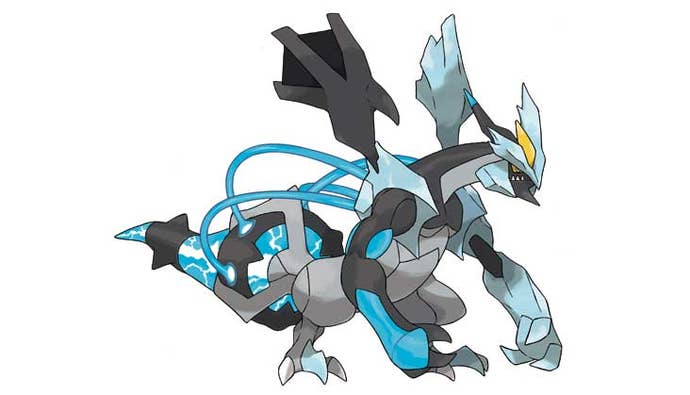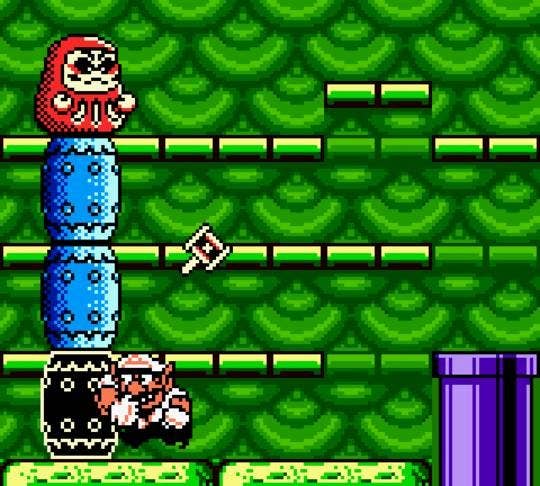USgamer Community Question: What's your All-Time Favorite Handheld Game?
When it comes to gaming on the move, which title do you think is the very finest?
This article first appeared on USgamer, a partner publication of VG247. Some content, such as this article, has been migrated to VG247 for posterity after USgamer's closure - but it has not been edited or further vetted by the VG247 team.
To be absolutely clear about this week's question, we're asking about your favorite handheld game. That is, a game for a handheld gaming system.
While you can ding us on a technicality if you wish, we're not including mobile systems like iPhones and Androids today. This is for pure gaming systems like the PS Vita, Game Boy, 3DS or even TurboExpress if you want to be all cool and retro-like.
While you consider which handheld game is your all-time favorite, here's the USgamer team and their top picks.

Bob Mackey, Senior Writer
I'm going to go ahead and assume most people don't think "Peace Walker" during conversations about the best portable games of all time. After it failed to wipe the floor with Nintendo's DS, the PSP amounted to a sad punching bag for the remainder of its life, and when Peace Walker snuck onto store shelves in the summer of 2010, Sony's poor little system was already at death's door. So people didn't take this portable Metal Gear seriously—though history (and Portable Ops) didn't give them many reasons to change their minds. The PSP, after all, was home to a number of obligatory downsizings of popular console series, with none of them being all that great. And after Metal Gear Solid 4 set new standards for graphical fidelity, few seemed excited to jump into some tactical espionage action via the PSP's tiny screen.
Thankfully, Peace Walker didn't amount to an undercooked attempt to copy Snake's console adventures on a platform that probably wouldn't cooperate. Instead, this installment of the Metal Gear saga acts as a sort of action/RPG/management sim. All of the standard Solid Snake stuff is there, with a slew of new gadgets and weapons, and controls that feel much more intuitive than Metal Gear Solid 3—even with the PSP's limited inputs. Layered on top of this, though, is the running of Outer Heaven itself: The base for Snake's private army. So along with the usual sneaking, tranq-ing, and box-hiding, you'll also have to recruit soldiers for the cause, then stick them in the right departments, or send them off on away missions. As Snake's Army grows, Outer Heaven does, too, generating new items for Snake—or any other soldier, really—to use in the core game.
I honestly didn't expect to see anything like this in a Metal Gear game, nor did I expect it to make me so addicted. Most Metal Gear solid games take around 15-20 hours to finish; I think my final time on Peace Walker was around 75 hours, simply because it was so much fun to grind for its equivalent of experience points, and fight its giant robot bosses for the chance to obtain some valuable parts that would soon be part of my own giant robots. Metal Gear Solid 4 left a really bad taste in my mouth, with Kojima losing most of restraint he displayed in Snake Eater, but Peace Walker did much to restore my faith in the series. And despite the drama at Konami, Metal Gear Solid V stands as one of my most anticipated games because its apparently borrowing everything I love about Peace Walker. A rewarding RPG-lite system, but in a glorious, open world instead of boxy PSP environments? YES.

Jaz Rignall, Editor-at-Large
I'm taking a trip back in time to find my most-beloved handheld game. Indeed, I'm going all the way back to the very dawn of true handheld gaming - 1989 to be exact. That's because I'm nominating Game Boy Tetris as my all-time favorite game.
Yeah, it's old, but I still think Nintendo's Game Boy version of Tetris is one of the greatest handheld games ever made. I used to play it on my commute home, and just never got bored of it. It was like some kind of hypnotic device that would turn my tedious 50-minute train ride into a trip home that would literally fly by. I played a lot of 9 and High 5 - the crazy, top-level mode that barely gives you a second to breathe before it unloads a high-speed shower of tetrads onto a nearly-filled screen of random pieces. Getting to the point where I could complete that mode pretty much every time really helped me hone my skills to a level that made me almost unbeatable in cable-link games against other human players.
What makes the game my all-time favorite is simply its timelessness. It's an abstract puzzle game that's simply perfect on Game Boy. The tightness of the controls, the feel of the buttons and the way the game is programmed to respond perfectly to inputs makes it, for me at least, the definitive game of Tetris. I really can't think of a better version.
Well, some may argue that Tetris DS is pretty sweet, and it is. But I still love the original version more. Sure, these days it does look a little dated on the Game Boy's murky green-grey screen, but that gameplay is so tight and still so fresh that I can pick it up anytime and play it. Indeed, now I'm talking about it, I just fancy digging out my old Tetris cart and Game Boy and giving it a go again. It's been a few years since I last played it, and now I'm really in the mood to see if I can still do a 9 and High 5!
And after a bit of practice… I still can!

Kat Bailey, Senior Editor
Pokémon, obviously. Specifically, Pokémon Black 2, which had the best array of postgame content and the most entertaining metagame of the series. I wish I could go back to the days when I could just plow through teams with Precious — the Shiny Choice Scarfed Haxorus I acquired after seeing every monster in the Unova Pokédex. Fairy-type monsters and mega evolutions make it kind of hard these days.
Anyway, along with Tetris, Pokémon is the quintessential handheld game. It was made for the platform, and over the years it has barely strayed from its portable trappings save for the odd spinoff. It introduced the world to social gaming when Mark Zuckerberg was still in middle school and mobile phones were expensive oddities. It has been a bit one the wane in recent years, particularly with the rise of Yokai Watch in Japan, but there's still no denying its power.
I've been playing Pokémon since the Red and Blue days, and as crazy as it is to say, it's had a large impact on the direction of my life. After all, it was Pokémon that introduced me to a group of friends who in turn introduced me to anime, which then got me to take Japanese in college, which was where I met my partner of 15 years. Funny how things like that work out, huh?
As for the game itself, I have deep affection for Ken Sugimori's art and the elaborate world that Game Freak has crafted since the series' inception. As uncomfortable as it would be to live with literal dragons who could alter the flow of time or simply stomp my house flat, it's a world I'd like to live in, if only for a day. Everyone always seems like they're having fun there, even the villains. Especially the villains.
Pokémon has given me many, many hours of entertainment over the years, and I still retain many of my old monsters to this day — previous keepsakes from different periods of my life. It makes me kind of sad that I haven't really had the desire to pick up Pokémon Omega Ruby since reviewing it last year, because I miss them, even if I know that they're just lines of code store in a game. It may be that I have moved on from Pokémon, as I've said I would many times over the years (it's really a time sink), but the series will always retain a special place in my heart. And so will Precious.

Jeremy Parish, Editor-in-Chief
I've already written quite a lot for USgamer about my all-time portable favorites, and I don't think anyone needs to hear me go on about Dragon Quest IX yet again (especially since I'd just end up griping once again about how the series has been all but abandoned in the U.S.). So instead, let's continue this past week's ongoing theme of eulogizing Konami by naming two of the greatest portable games ever, two parts that really make a single experience: Castlevania Aria of Sorrow for Game Boy Advance and its direct sequel, Dawn of Sorrow for DS.
Both games evoke powerful memories for me. Aria of Sorrow arrived at an absolute low point in my life — I was jobless, homeless, and the girl I'd given up my job and home to be with had just dumped me. I didn't see a future, or a way forward in life, and there were several nights I laid in bed and wondered if there was even any point to anything. But then, a couple of days after I hit my lowest low, Aria of Sorrow came out. I didn't make me leap up and shout "Eureka!" and renew my zest for life or anything... but it was a really great game that finally managed to recapture the magic of Symphony of the Night. And it had a ton of grinding built into its design, so I could just lose myself for hours at a time fixating on collecting crap as I explored the sprawling castle. It kept me going for a little while before things turned around.
As for Dawn of Sorrow, that came at a totally different point in my life; I'd relocated to California and had become an editor at a games website. But that was great, too, because I snagged a copy from Japan when it first launched over there and blew it out for the site. It let me follow my obsessions — importing games, portable games, metroidvania games — and make a living from it. Not many people get to experience that, and it made me really appreciate how much my luck had turned around since Aria of Sorrow.
Oh, and the games were great. They put a different spin on the exploratory Castlevania concept, turning the various aimless RPG mechanics of previous games into fun, focused play elements. The random, unpredictable "DSS" card drops of Circle of the Moon now became a systemic soul-collecting system that allowed you to gather consistent powers from all enemies, enhancing your capabilities in many different ways… or else simply being weird or fun. Dawn of Sorrow might have gone a little too far by making soul collection cumulative while also forcing you to sacrifice certain one-of-a-kind souls in exchange for unique weapons, but even that managed to be interesting in the way it forced players to make long-term decisions.
Sure, the games were a bit on the easy side, but the point was never about challenge — it was about exploration. Not just exploring the castle, but the enormous number of skills and powers available for protagonist Soma to experiment with. And the games' endings and alternate modes offered fun twists on classic Castlevania titles, too. All in all, a great and memorable pair of adventure. I would have spent dozens of hours with each of them even if they didn't mean so much to me personally.

Samantha Leichtamer, Community Curator
Wario Land and Wario Land 2 were great games, but Wario Land 3 took all the elements of its predecessors a step up, and made the perfect puzzle-platformer game. Dare I say, Wario Land 3 was the best platformer the Game Boy Color ever saw. The game begins when Wario stumbles upon a Music Box and is sucked inside it. There he encounters a magical being that informs Wario he must recover five small music boxes spread throughout the world if he wants to return to the one from which he came. If successful he’ll be transported back and receive a treasure. With money on his mind, Wario agrees.
Unlike many of the platformers for the Gameboy Color that were superlinear - having you graduate from one level to the next - Wario Land 3 mixes in some Metroidvania essence by requiring you to travel back to different parts of the map at different times in order to complete each level. Each map can be played at daytime or nighttime, with different elements of the map becoming available at either time. Each level contains four chests and four keys - find the key, open the matching chest, acquire treasure. While some don’t do much, others can grant you new abilities and unlock new paths. The scope of the game is huge, with 25 levels and a total of 100 treasures.
Wario is a goofy and lovable villain, and playing him is always a funny and comical experience that is made more so in the Wario Land games by his many reactions. In Wario Land 3, Wario can go through a number of status effects in response to his environment or enemy attacks. For instance, if Wario successfully eats a donut thrown at him by a doughnuteer he will transform into Fat Wario, crushing everything in his path. If he’s touched by a Zombie he will become one himself, impervious to all damage but forced to move at a super slow speed. All-in-all, Wario World 3 is a great game with high replay value. Easily the best portable game of my childhood, it left a lasting impression on me. I will forever hold it in high esteem.
